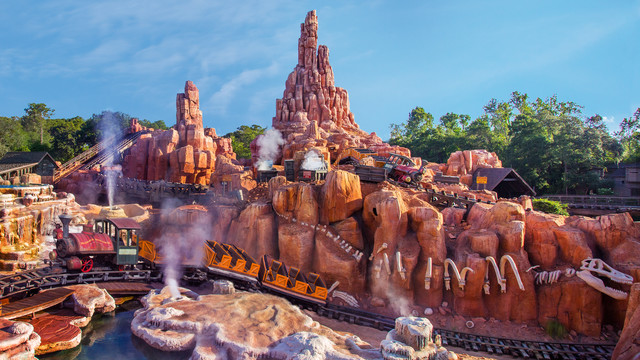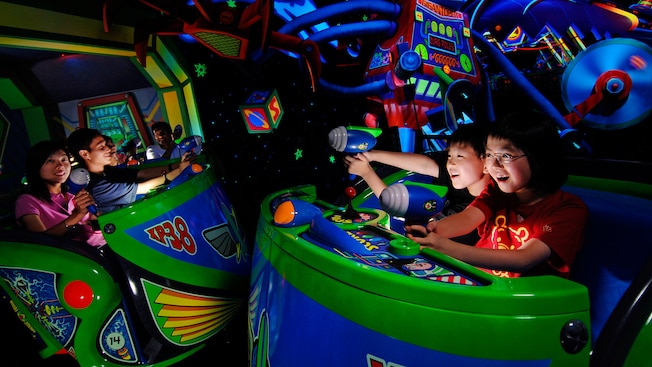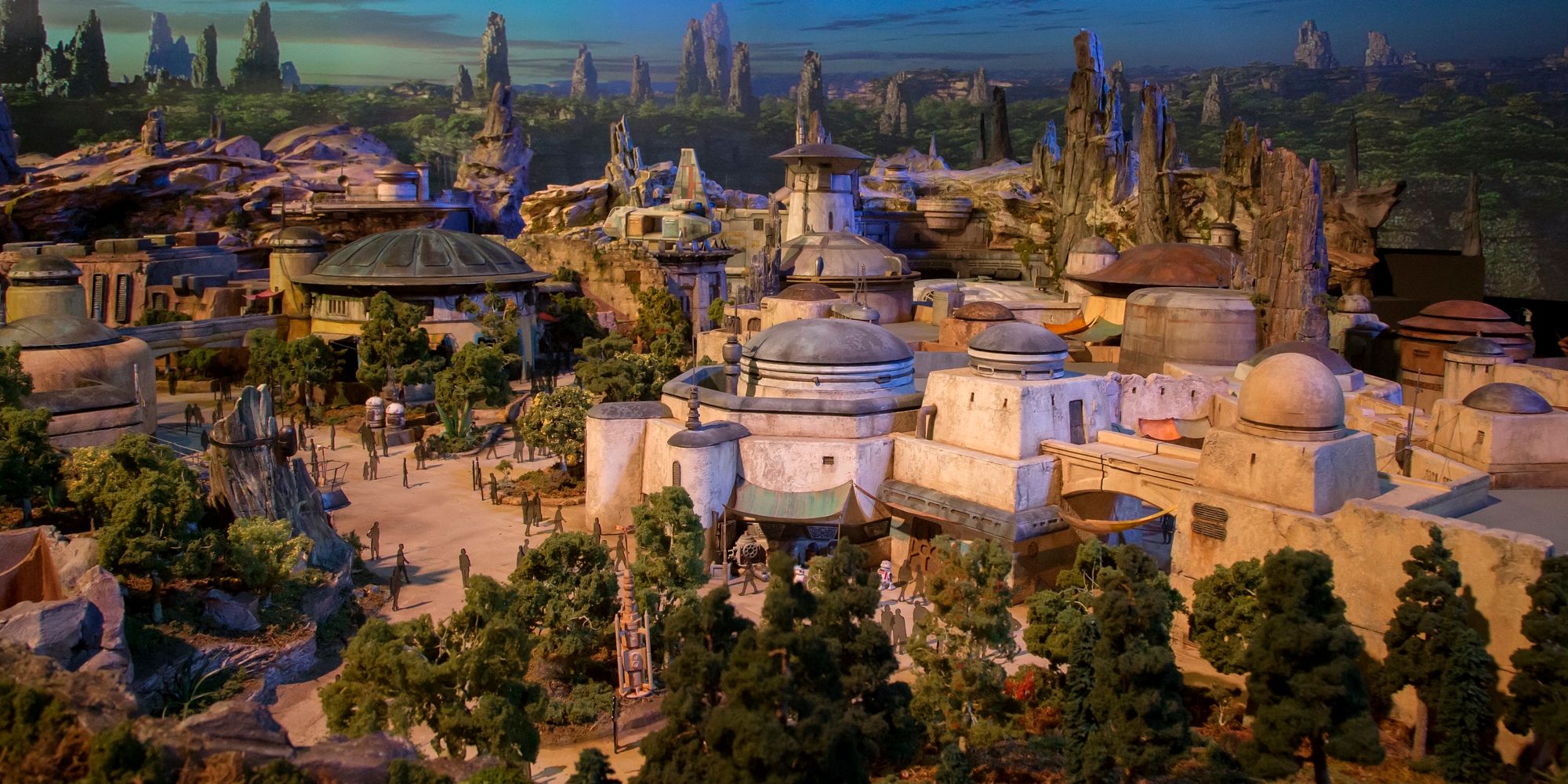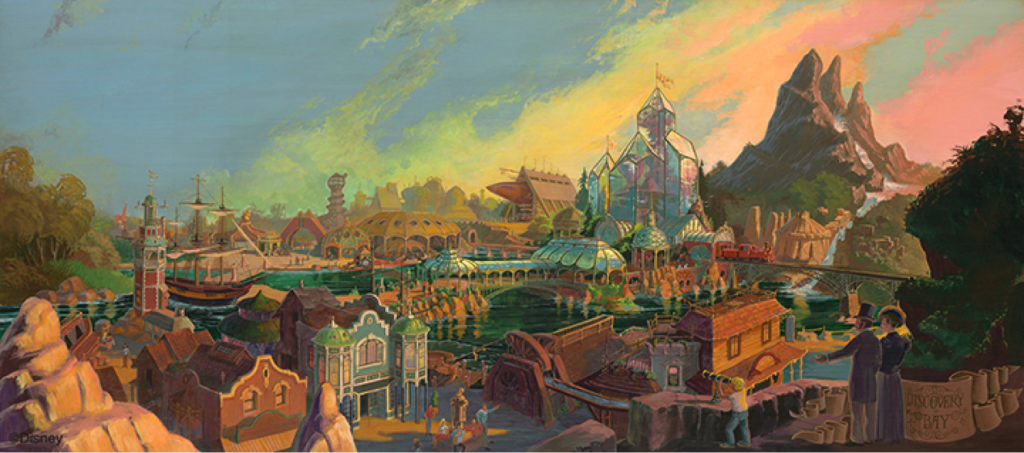Disney Extinct Attractions: Discovery Bay
Welcome to Disney Extinct Attractions. My name is Cole, and I'll be your guide on today's trip to an alternate dimension version of San Francisco.
This past week, Disney released amazing news to hardcore Star Wars fans: Star Wars: The Clone Wars is saved and will be coming to the Disney Streaming Service. The show had been canceled before in the past (well before it could finish its story), so most fans, myself included, are ecstatic that we'll get to finish these characters' journeys and create a seamless connection between Attack of the Clones and Revenge of the Sith. Now, what does Star Wars have to do with today's attraction? Not much to be honest, but Lucasfilm is headquartered in San Francisco and Star Wars: Galaxy's Edge is (loosely) related to today's featured attractions. But that's enough teasing, so let's jump back to the early 1970s.

Our story begins with Big Thunder Mountain Railroad, the Frontierland E-Ticket attraction that joined Disneyland in 1979. Big Thunder has a relatively small footprint, at least compared to its predecessor, the Mine Train Thru Nature's Wonderland. With so much room to play with, Tony Baxter and his team let their imaginations run wild as they planned an expansion to Frontierland.
As legend has it, Jason Chandler was an inventor in the Big Thunder Mountain area who realized that the Mountain had a load of gold underneath it. He gathered a crew to mine the gold, but one day there was a mining accident, and Chandler and his crew had disappeared along with all of the gold. Everyone assumed that they had perished, leading to the Mountain's haunted persona today. However, Chandler had actually managed to escape along with all the gold, and he made his way over to San Francisco. There, he established himself as a wealthy investor who would take a chance on anyone with an odd invention that had been rejected by everyone else.
Coined Discovery Bay when it was officially announced in 1976, this land was set to feature countless new attractions as it transformed from a simple expansion of Frontierland to a fully functioning land of itself. In fact, the powers that be were so excited by the idea that a television miniseries called Discovery Bay Chronicles was also set to hit the airwaves.
Now that we have a taste of Discovery Bay, let's jump into what attractions were actually in store for this unbuilt land.
Lost River Rapids, also known as The Lost World, was a rapids ride with dinosaurs throughout. I couldn't find much information on it, but it seemed like an awesome idea and would have paved the way for the prevalence of rapids attractions that we find in the Disney Parks today. (It also seems likely that it inspired the Jurassic Park attraction at Universal, but I do not have any proof of that, so don't take it as fact).
Continuing our journey, we find the Spark Gap Loop, or The Tower, a rollercoaster utilizing magnetic technology. This coaster was well ahead of its time, with magnetic technology still uncommon in the 1970s, at least at that large of a scale. However, it seemed to lack the heavy use of story elements that we find in classic Disney coasters, so I am unsure how beloved it would have been.
One could also find Professor Marvel's Gallery of Illusion in Discovery Bay. This attraction was a rotating theater like Carousel of Progress that featured Professor Marvel showing off all of his magical finds, including a purple dragon that we'll talk about a little later.
Moving around the horn, guests would also find Mysterious Island, home of the Nautilus and Jules Verne-inspired adventures.
In this giant land, we also would have found the Fireworks Factory. Now early concept art for this attraction painted the picture that it was a simple shooting gallery, but as development progressed, the idea morphed into a moving shooting gallery where guests would shoot at targets throughout the factory-themed attraction.
Finally, we come to the centerpiece of the entire land, an attraction based on The Island at the Top of the World. This attraction would have been one of the most amazing attractions to ever exist as you traveled aboard the airship Hyperion to the Arctic. Here, you would stumble across the remains of the lost city of Astragard, a place where mythical creatures lived in abundance. I'm not doing this attraction justice, but let's just say that was set to be one of the greatest Disney attractions of all-time, combining film, miniatures, and Audio-Animatronics to great effect.
So what happened that we never got to experience Discovery Bay and all of its amazing attractions inside?
The first reason is that The Island at the Top of the World was a complete flop, both critically and commercially. Even at a time in the company's history when they were more willing to take risks, the film flopped so hard that it was impossible to justify continuing with the attraction.
With this first nail placed, the coffin continued to be closed with the costs of Epcot and Tokyo Disneyland rising as well as the public's new fascination with space-themed science fiction, largely because of Star Wars. The public was simply no longer in a place to justify building Discovery Bay, so the land was canceled, with only Big Thunder Mountain being constructed in the area. However, a few of the attractions did manage to make their way through the cracks and were built in parks around the world.

Fireworks Factory ultimately inspired all of the Buzz Lightyear attractions around the world, as well as Dick Tracy's Crime Stoppers (though that attraction never managed to appear either). It was also the namesake for a restaurant in Pleasure Island at the former Downtown Disney in Walt Disney World.
Professor Marvel's Gallery of Illusion also managed to live on through the original Journey into Imagination, also created by Tony Baxter. Professor Marvel became Dreamfinder and one of his creatures transformed into the lovable Figment. The whimsical nature of the original Journey makes me really miss how clever of a show we could have had with the Gallery of Illusion.
Mysterious Island managed to make its way to Tokyo DisneySea. With its Jules Verne-esque nature, one could say that it is the closest that we ever got to experiencing Discovery Bay. One could say that, but they would be wrong because Tony Baxter managed to do us one better when he was designing Disneyland Paris.
When designing Disneyland Paris, Tony Baxter decided to fix the Tomorrowland problem (of needing a constant upgrade) by drawing upon the ideas of Jules Verne, H.G. Wells and Discovery Bay. Named Discoveryland, this land had the same steampunk-esque look that Baxter wanted for Discovery Bay, but instead of the attractions we discussed earlier, many of your favorite Tomorrowland attractions populated the land.
But Baxter still included a few nods to Discovery Bay like the Nautilus and the Hyperion Airship. I really love that the Hyperion still made its way into a Disney Park because it's one of those little details that fly right over the casual guest's head (pun intended). Heck, I hadn't even heard of The Island at the Top of the World before writing this article, so featuring little elements from older films like that is an amazing way to commemorate these oft-forgotten films.

For many years, Disneyland fans held out hope that we would one day see Discovery Bay appear in the plot of land behind Frontierland. However, that will no longer be possible as Star Wars: Galaxy's Edge has taken over this area. While it is disappointing that we will never get to see Discovery Bay, I'm glad that so many of its attractions still managed to find life in the parks because so many unbuilt attractions do not even get that much love.
Well, that brings our story today to a close, but rather than our normal clues for next week, I wanted to inform you that I'll be taking the next month off from the blog. I'm heading on a vacation and then heading back to school and have some school commitments that will take up all my time, but do not fear, I'll be back at the end of August.
Thanks for reading and have a magical month!



